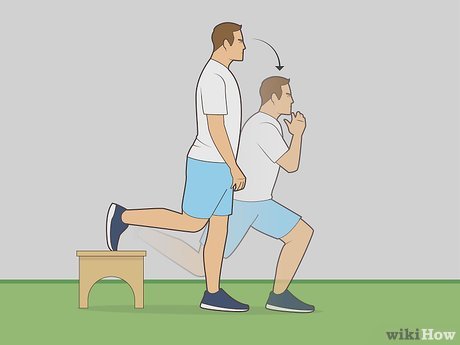Running back training is one of the most crucial aspects of a football player’s development. A running back (RB) must possess a unique combination of speed, agility, power, and vision to excel on the field. Whether you’re a seasoned player or a beginner, a well-rounded training program can significantly enhance your performance, helping you break tackles, read defenses, and gain those crucial yards. This guide will cover key exercises, drills, and tips to help you master running back training and elevate your game.
Why Running Back Training is Essential
Running backs are often considered the backbone of a football offense. Their primary role is to carry the ball, but they are also involved in blocking, receiving, and executing plays. A comprehensive training regimen that targets strength, agility, endurance, and mental focus is vital to a running back’s success.
Key areas to focus on in running back training include:
- Speed and Agility: Quick bursts and lateral movements are essential for dodging defenders.
- Strength and Power: Power to push through tackles and gain extra yards.
- Ball Handling: Mastery of carrying and protecting the football.
- Vision and Decision-Making: Reading the field and making split-second decisions.
Top Exercises for Running Back Training
1. Sprints and Speed Drills
Speed is crucial for any running back. Short bursts of speed can help you break away from defenders. Some effective drills include:
- 40-Yard Dash: Measure your straight-line speed with this classic test.
- Shuttle Runs: Sprint 5 to 10 yards, then backpedal and repeat. This drill improves lateral movement and agility.
- Cone Drills: Set up cones in various patterns to improve quick directional changes.
2. Plyometric Training
Plyometrics help develop the explosiveness required to burst through defensive lines and jump over defenders. Some excellent plyometric exercises for running backs include:
- Box Jumps: Jump onto a raised platform to improve leg strength and explosion.
- Depth Jumps: Step off a box and immediately jump up as high as possible when you land.
- Bounding: This involves long strides, like skipping with a purpose, to improve power and range of motion.
3. Strength Training
Strength plays a major role in breaking tackles and powering through contact. Focus on compound exercises that target the lower body, core, and upper body.
- Squats: Develop leg strength, essential for running backs to power through defenders.
- Deadlifts: Build overall strength, focusing on the posterior chain.
- Bench Press: Enhance upper body strength to stiff-arm defenders and protect the ball.
4. Agility and Footwork Drills
Running backs must maintain excellent footwork to avoid defenders and quickly change direction. Agility drills like:
- Ladder Drills: Increase foot speed and coordination.
- Cone Weaving: Set up cones in a zigzag pattern and practice weaving in and out to simulate eluding defenders.
- T-drills: This drill develops fast turns and quick direction changes, which are vital in tight spaces on the field.
5. Ball Handling Drills
Running backs need to be proficient in handling and protecting the ball, especially when facing contact. Focus on the following drills:
- One-Handed Catches: Catch the ball with one hand to improve control.
- Ball Protection Drills: Run through a series of defenders while holding the ball in the proper position, learning to protect it from fumbles.
- Catch-and-Run: Catch passes and immediately accelerate into a sprint, simulating the transition from receiving to running.
Mental Focus and Decision-Making
Running backs must not only be physically prepared but mentally sharp as well. The ability to read defenses, make quick decisions, and adapt to various situations is key to success. Some tips to improve your football IQ include:
- Film Study: Review past games to understand defensive schemes and tendencies.
- Visualization: Mentally rehearse plays and movements to increase your awareness and reaction time.
- Situational Awareness: Know when to power through a tackle, cut for extra yards, or step out of bounds to avoid injury.
Nutrition and Recovery for Running Backs
Optimal nutrition and recovery are essential parts of any running back’s training program. Running backs put a lot of wear and tear on their bodies, so proper rest and diet are critical.
- Hydration: Stay hydrated to maintain peak performance, especially during intense training sessions.
- Protein Intake: Protein helps repair muscles and promote growth. Include lean meats, fish, and plant-based proteins in your diet.
- Rest and Sleep: Allow your muscles to recover by getting 7-9 hours of sleep per night.
Conclusion
Running back training is about more than just running fast. It requires a combination of speed, strength, agility, and mental acuity. By incorporating the right drills, exercises, and strategies into your training regimen, you’ll develop the skills necessary to dominate on the field. Stay focused, put in the work, and watch your performance skyrocket.










































